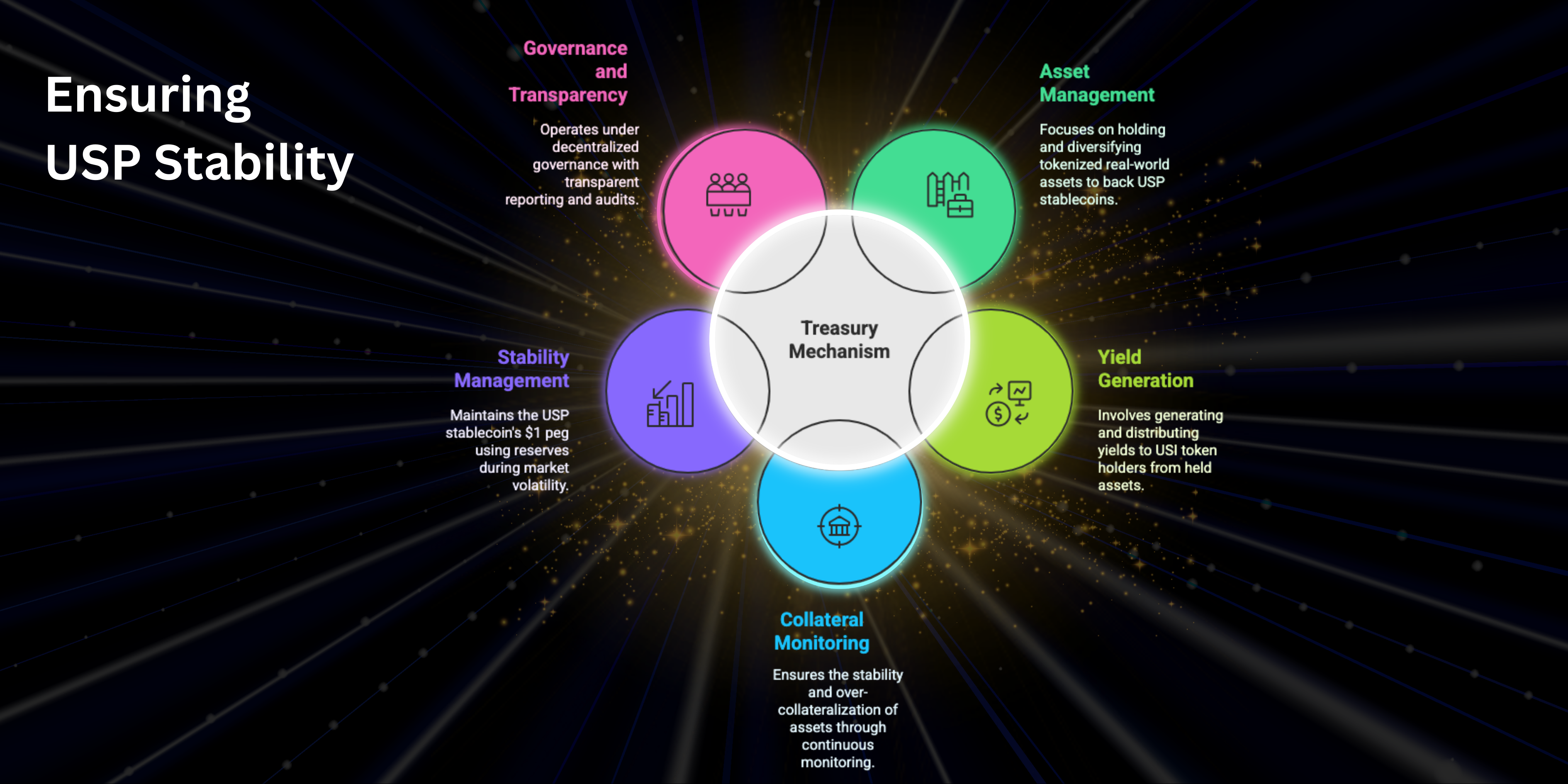Treasury Mechanism

The Treasury Mechanism of STBL plays a pivotal role in maintaining the stability of the USST stablecoin and ensuring sustainable yield distribution for YLD token holders. It is a dynamic system designed to optimize asset management, facilitate transparent operations, and ensure the protocol remains resilient against market volatility.
1. Asset Management and Allocation
- The STBL Treasury primarily holds tokenized real-world assets (RWAs) such as:
- U.S. Treasury Bills
- Other low-risk, yield-generating financial instruments
- These assets serve as the collateral backing the circulating USST stablecoins.
- The Treasury uses a diversified allocation strategy to ensure stable and predictable yields while mitigating potential risks.
2. Yield Generation and Distribution
- The Treasury generates yield through interest payments from the RWAs it holds.
- These earnings are distributed to YLD token holders, providing a passive income stream.
- A portion of the yield may also be directed towards operational expenses, protocol development, and enhancing the ecosystem’s resilience.
- The transparent tracking of yield distribution ensures equitable returns for participants.
3. Collateral Monitoring and Rebalancing
- STBL’s Treasury Mechanism includes continuous monitoring of the collateral value using on-chain oracles.
- If the collateral value fluctuates, the system dynamically rebalances assets to maintain the required over-collateralization ratio.
- In cases of extreme market conditions, the Treasury can liquidate specific assets to restore protocol stability.
4. Stability Management through Treasury Reserves
- A portion of the Treasury is maintained as a stability reserve to act as a buffer against market volatility.
- These reserves are strategically deployed during periods of price instability to protect the $1 peg of USST.
- If collateral value drops, the reserves can be used to repurchase USST from the market, supporting price stabilization.
5. Treasury Governance and Transparency
- STBL’s Treasury operates under a *decentralized governance model, where *YLD token holders can participate in decision-making.
- Governance proposals may include decisions on asset allocation, risk management policies, and yield distribution adjustments.
- Transparent reporting and regular audits ensure all participants have visibility into the Treasury’s activities.
6. Profit Redistribution
- Unlike traditional stablecoins where profits are retained by centralized entities, STBL redistributes its profits back to the users.
- Yield generated from RWAs is distributed to YLD token holders, providing equitable access to the protocol’s financial gains.
- This model aligns with STBL’s mission of democratizing financial benefits using blockchain technology.
7. Risk Mitigation and Contingency Planning
- The Treasury Mechanism employs various risk management strategies, including:
- Diversified Collateral Portfolio: Reducing dependence on any single asset type.
- Automated Liquidation: Preventing under-collateralization through swift asset liquidation.
- Reserves Allocation: Maintaining emergency funds to handle unforeseen volatility.
- These mechanisms ensure the long-term sustainability and robustness of the protocol.
The Treasury Mechanism in STBL is a well-structured system designed to ensure the stability of the *USST stablecoin, generate yield for *YLD token holders, and maintain the protocol’s overall health. Through transparent management, efficient asset allocation, and proactive risk management, the Treasury ensures the protocol's resilience in various market conditions.